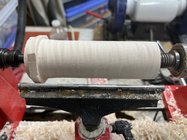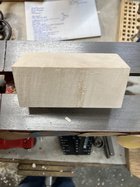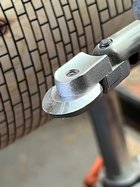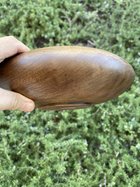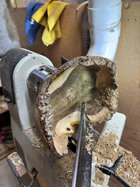My wife saw a guy cutting down trees and brought home some bradford pear and ailanthus (Tree of Heaven). I wouldn't have bothered with the ailanthus, but she didn't know any better. It's a trash tree and invasive species.
This was from a crotch. While I don't like the bowl, I figured I'd post it here since we don't see much Tree of Heaven. The right side above the crotch allows light through, but only that one spot.


This was from a crotch. While I don't like the bowl, I figured I'd post it here since we don't see much Tree of Heaven. The right side above the crotch allows light through, but only that one spot.







